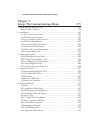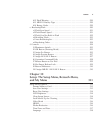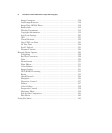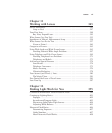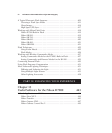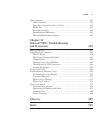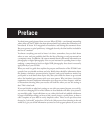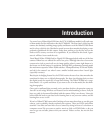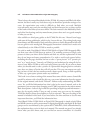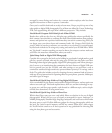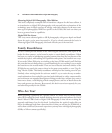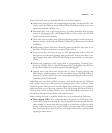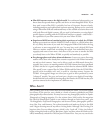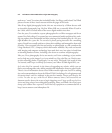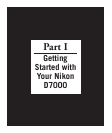There’s always the manual furnished with the D7000. It’s compact and filled with infor-
mation, but there’s really very little about why you should use particular settings or fea-
tures. Its organization may make it difficult to find what you need. Multiple
cross-references may send you searching back and forth between two or three sections
of the book to find what you want to know. The basic manual is also hobbled by black-
and-white line drawings and tiny monochrome pictures that aren’t very good examples
of what you can do.
Also available are third-party guides to the D7000, like this one. I haven’t been happy
with some of these guidebooks, which is why I wrote this one. The existing books range
from skimpy and illustrated by black-and-white photos to lushly illustrated in full color
but too generic to do much good. Photography instruction is useful, but it needs to be
related directly to the Nikon D7000 as much as possible.
I’ve tried to make David Busch’s Nikon D7000 Guide to Digital SLR Photography differ-
ent from your other D7000 learn-up options. The roadmap sections use larger, color
pictures to show you where all the buttons and dials are, and the explanations of what
they do are longer and more comprehensive. I’ve tried to avoid overly general advice,
including the two-page checklists on how to take a “sports picture” or a “portrait pic-
ture” or a “travel picture.” Instead, you’ll find tips and techniques for using all the fea-
tures of your Nikon D7000 to take any kind of picture you want. If you want to know
where you should stand to take a picture of a quarterback dropping back to unleash a
pass, there are plenty of books that will tell you that. This one concentrates on teach-
ing you how to select the best autofocus mode, shutter speed, f/stop, or flash capability
to take, say, a great sports picture under any conditions.
This book is not a lame rewriting of the manual that came with the camera. Some folks
spend five minutes with a book like this one, spot some information that also appears
in the original manual, and decide “Rehash!” without really understanding the differ-
ences. Yes, you’ll find information here that is also in the owner’s manual, such as the
parameters you can enter when changing your D7000’s operation in the various menus.
Basic descriptions—before I dig in and start providing in-depth tips and information—
may also be vaguely similar. There are only so many ways you can say, for example,
“Hold the shutter release down halfway to lock in exposure.” But not everything in the
manual is included in this book. If you need advice on when and how to use the most
important functions, you’ll find the information here.
David Busch’s Nikon D7000 Guide to Digital SLR Photography is aimed at both Nikon
and dSLR veterans as well as newcomers to digital photography and digital SLRs. Both
groups can be overwhelmed by the options the D7000 offers, while underwhelmed by
the explanations they receive in their user’s manual. The manuals are great if you already
know what you don’t know, and you can find an answer somewhere in a booklet
David Busch’s Nikon D7000 Guide to Digital SLR Photographyxviii



